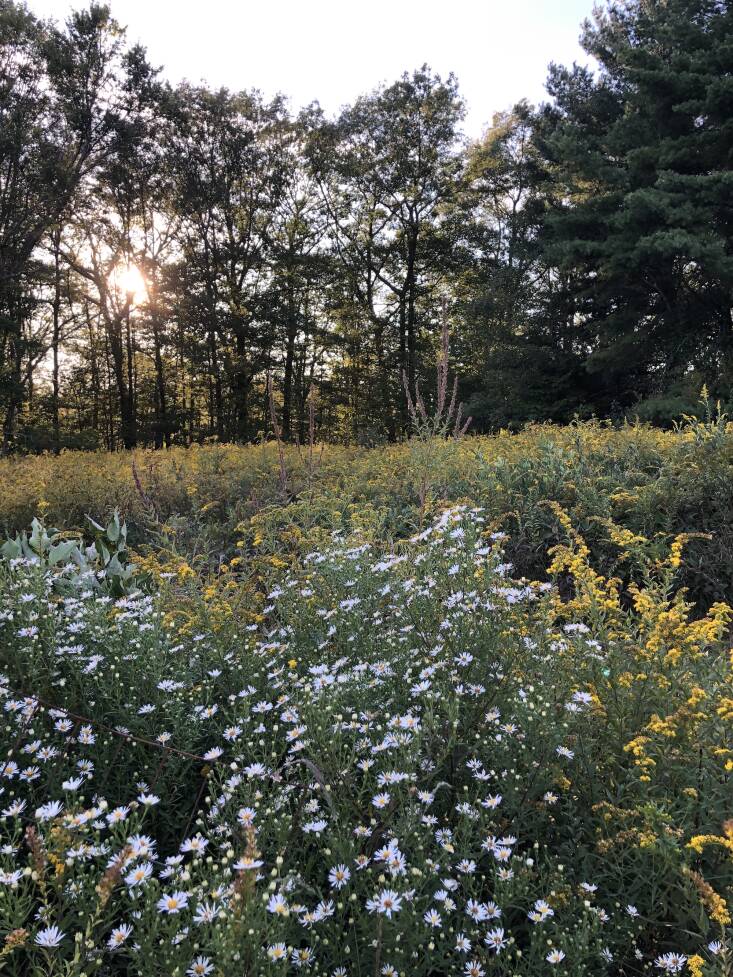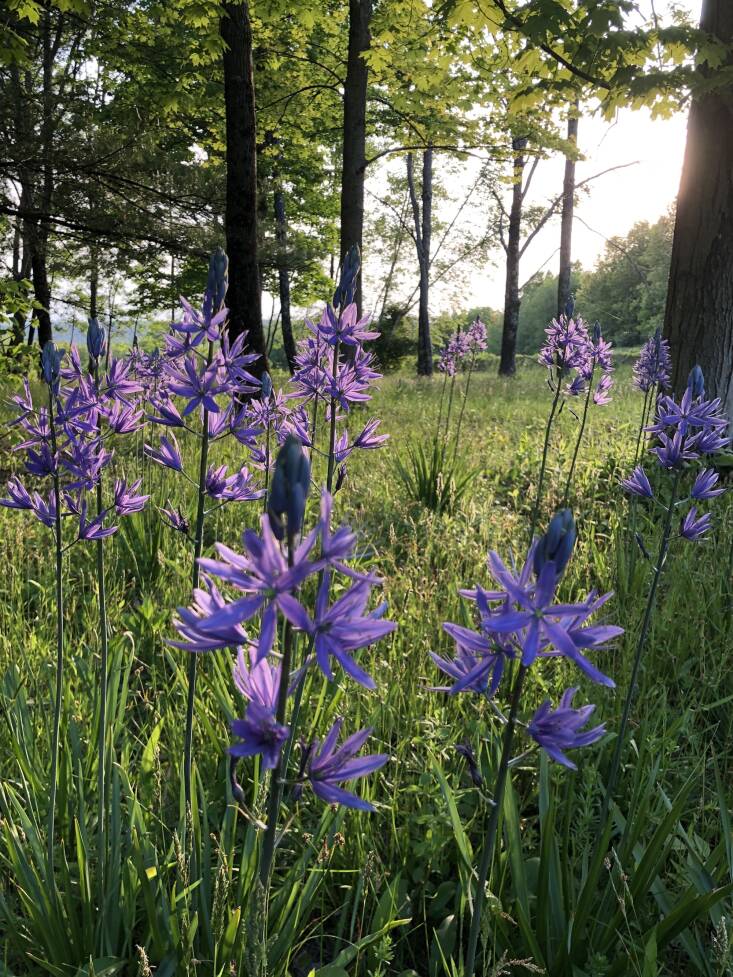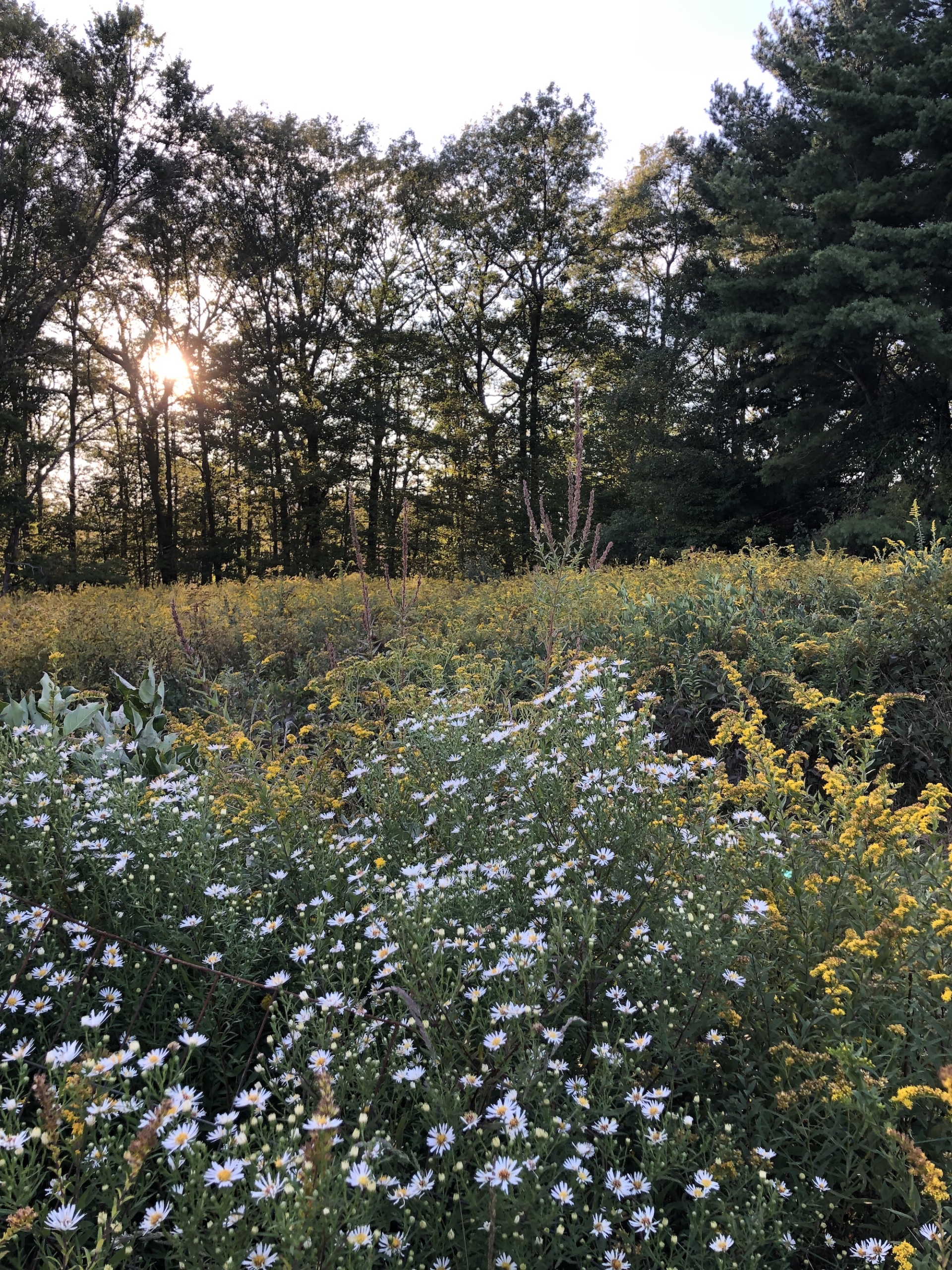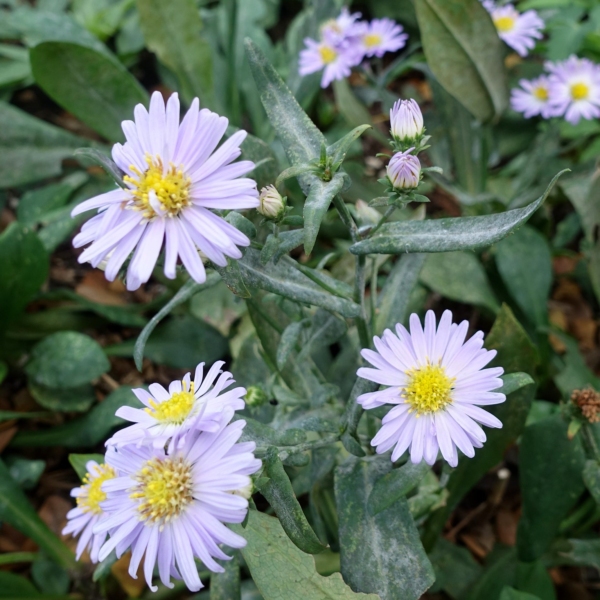This is part of a series with Perfect Earth Project, a nonprofit dedicated to toxic-free, nature-based gardening, on how you can be more sustainable in your landscapes at home.
After weeks of hot, muggy weather, the temperatures in the Northeast have cooled and we’re beginning to see the signs of fall—apple picking, here we come! Years ago, conventional wisdom at this time of year had us all putting “the garden to bed.” We’d clip, throw away, tidy nature up so the garden looked like a living room before a party—everything just so. But we now know better. So much of what we thought was trash is actually treasure—for flora and fauna. In our latest dispatch from Perfect Earth Project, founder Edwina von Gal shares her wisdom on what we can do now to make our gardens thrive for all living things.
Photography by Melissa Ozawa.
1. Don’t cut back perennials and grasses.

Leave them during the winter so that they provide seeds for birds, shelter for insects and other animals—and sculptural visual interest in the cold months. Goldfinches, cardinals, grosbeaks, and other songbirds like to dine on the seeds of sunflowers, asters, echinacea, and other native flowers, so don’t deadhead these blooms once they have faded. Wait until spring to make your cuts when cavity-nesting insects, like native yellow-faced, leaf-cutter, and carpenter bees, as well as some moths and wasps, are looking for hollow stems to start their broods. You’ll know the time is right when you start seeing these insects buzzing about. Xerces Society recommends snipping stems in a variety of heights—from eight to 24 inches above ground—to entice different types of insects. And leave the clippings on the ground where they will decompose and nourish the soil. The new growth will cover it all up.

The one thing you do want to cut back, though, is invasive plants. Hack them to the ground before and cover with layers of cardboard to smother them. Also be careful not to let any pesky weeds go to seed. “You don’t want to leave them for the birds,” says von Gal. She removes any from her property and places them in a vinegar bath, before rinsing them and eventually adding them to her compost pile.
2. Do clean up the vegetable garden.
It’s good practice to clean up your vegetable garden. Remove spent plants, especially tomatoes, peppers, and other nightshades, which can harbor disease. “But don’t leave the soil bare,” says von Gal. “Plant a cover crop.” She likes field peas or pea shoots, which are also delicious to eat. “They do die back with frost, but they’ll form a mat which insulates the soil over the winter,” she says. “It’s like a nice warm blanket.” You can also cover beds with straw or dried leaves.
3. Plant native bulbs and your favorite spring ephemerals.

While you’re digging in your tulips and narcissus, add some native bulbs to your garden, such as Camassia (there are species native to different regions of the U.S.) and Brodiaea or Triteleia (a western spring-blooming bulb).
Fall is also an excellent time to plant spring ephemerals. You’ll be happy you did when those first native bleeding hearts, bloodroot, and trillium pop up in early spring after a long winter. Planting now helps the roots get established, giving them a head start for spring. Von Gal also recommends adding a plant stake when you place new herbaceous plants, especially if starting with tiny plugs. Winter is long and it’s easy to forget what went where. A stake helps keep track of them in the spring, so they don’t accidentally get weeded out.


